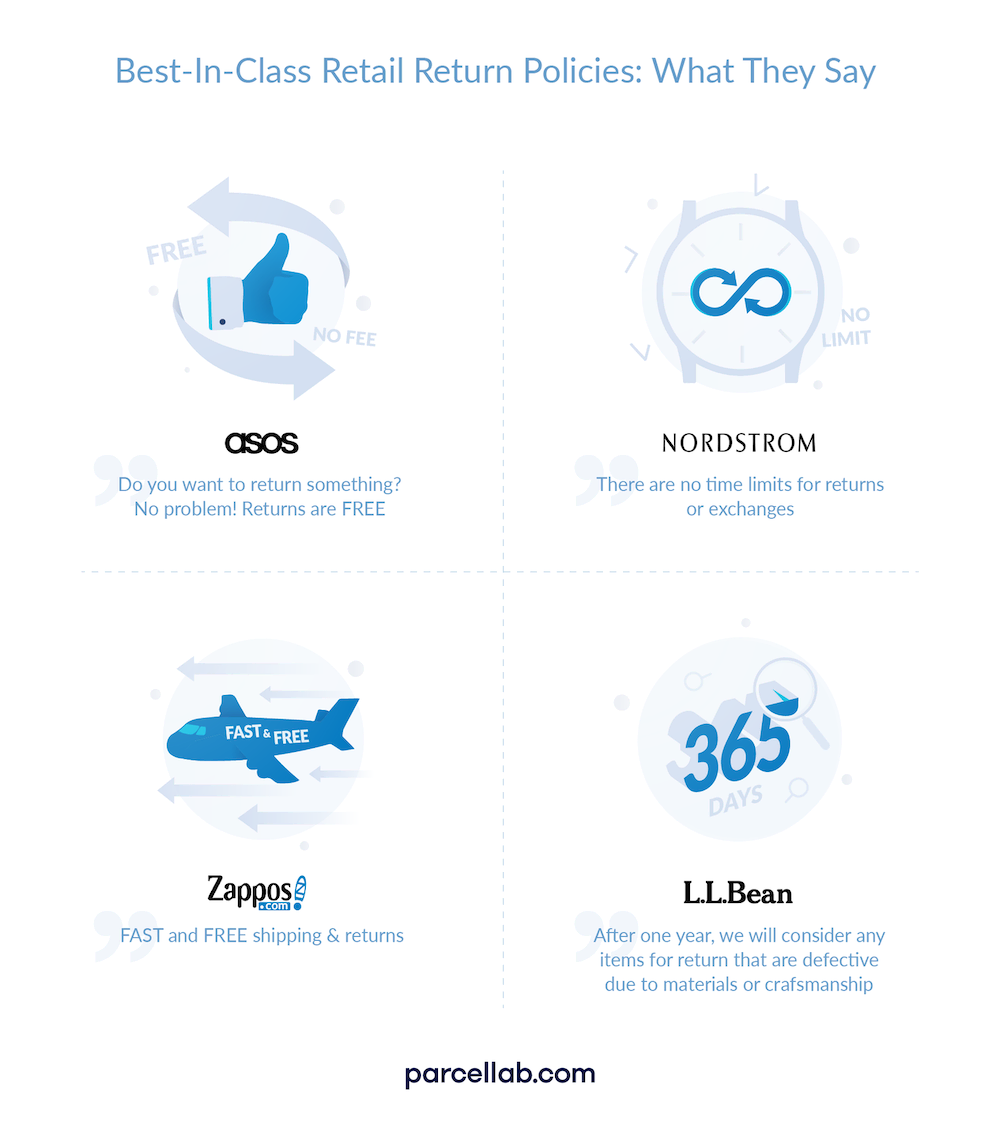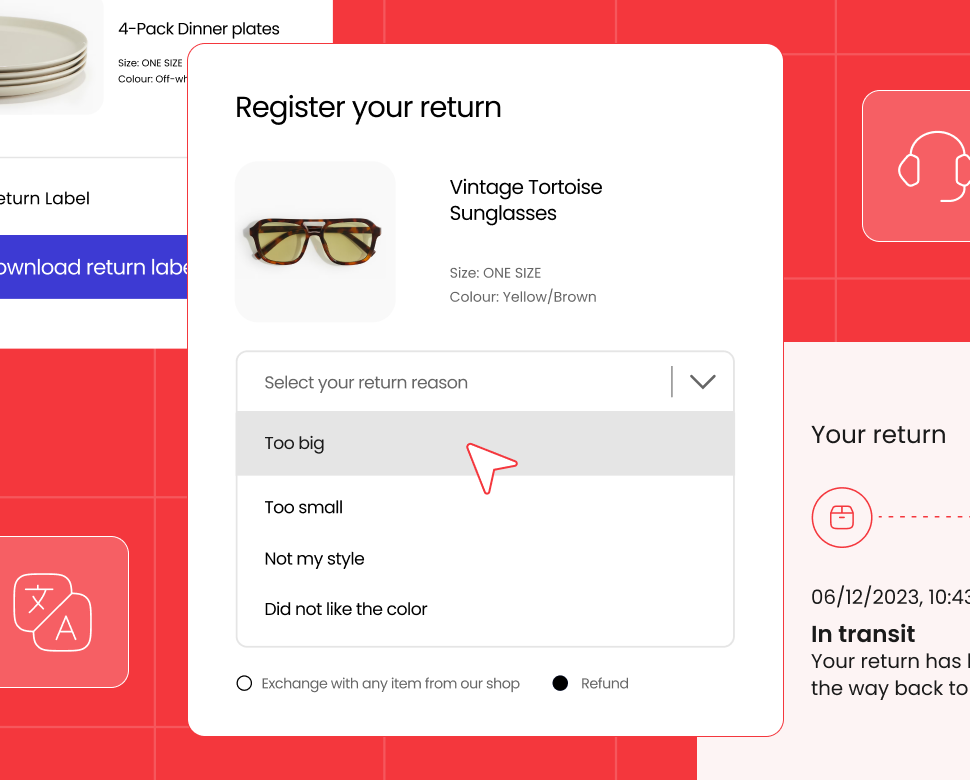How A Good Returns Policy Can Turn Unwanted Purchases Into Brand Loyalty

There are many reasons why a customer might return a product to an online retailer. Sometimes they just change their mind. Or the colour they picked doesn’t work when they see it for real. Or perhaps the size they chose wasn’t generous enough. Such are the challenges of online retail.
But that doesn’t mean they’ve lost faith in your brand. In fact, one of the primary reasons they probably chose to buy from you was because you offered a flexible returns policy – something that’s becoming increasingly important.
There are many reasons why a customer might return a product to an online retailer. Sometimes they just change their mind. Or the colour they picked doesn’t work when they see it for real. Or perhaps the size they chose wasn’t generous enough. Such are the challenges of online retail.
But that doesn’t mean they’ve lost faith in your brand. In fact, one of the primary reasons they probably chose to buy from you was because you offered a flexible returns policy – something that’s becoming increasingly important.
Here are the most common reasons for returning orders or products.
The importance of the returns policy
Research shows that in fact 67% of US shoppers look at a site’s returns policy before buying: and that 68% shop based on brand reputation. Both are equally as important. But do they have a reciprocal relationship? How can one influence the other – and exceed customer needs to foster even greater brand loyalty?

Here are some of the best in-class return policies.
This is what your returns policy needs
There are a lot of things online retailers should keep in mind when it comes to their returns policy. Here are the most important ingredients for a perfect returns policy:
1. A returns policy needs to be clear and simple
The simplest policies are usually the most effective. A straightforward ‘if you are not 100% satisfied with your purchase, you can return it and get a full refund, or exchange the product for another, within 30 days of purchase’ usually does the trick. But if there are any specific actions you need the customer to take – such as print a label, or provide a receipt/reference number – make sure that it’s all spelled out in no uncertain terms. It makes a difference to how your brand is perceived.
2. A returns policy should be generous
Let’s just be honest: paying for customers to send back goods is costly. It apparently costs retailers some £60 billion a year in the UK alone! But a lot of big online retailers do it – ASOS being the most well-known. But generosity isn’t just financial: a longer cooling off period can reflect positively on a company too. US outdoor goods retailer, L.L.Bean, only recently changed its ‘product lifetime’ guarantee to a single year (which is still pretty generous) adding the caveat that they’ll still replace older items if the buck (literally) stops with them. And it doesn’t seem to have done the well-established brand any lasting damage.
3. A returns policy needs to be proactive
Great customer service means anticipating needs – before the customer realises what they need! Small, useful gestures like adding return slips in (pre-paid or other) with each shipment, a branded sticker or a ‘thank you’ note with a discount voucher attached can reflect positively on your brand; and can even offset the pain of the returns process/cost involved.
4. A returns policy should be time-saving
If you’re a smaller company selling via a third party online marketplace like Shopify, eBay, or Etsy, then the site itself will no doubt have returns policies you and your customers have to comply with. However, in some cases, such as with eBay (which offers this advice) you can automate your returns policy – such as specifying the return time period, selecting which items can have a full refund or credit etc – and automatically issue refunds. Other marketplaces like Shopify even offer their own easy-to-use returns policy template. And how does this impact your brand? Well, the less time you spend on returns, the more time you can dedicate to other areas of customer care, marketing, and product quality.
5. A returns policy needs to be informative
Keeping customers informed about the status of their returns – letting them know when they can expect to receive a placement, refund or credit – might sound like an essential part of customer service; but it’s easy to overlook. However, this can be easily resolved by sending online account tracking notifications – or even by emailing them to let keep them informed. By doing so, they’ll either be redirected to your site, or given another opportunity to see what you brand has to offer. Emails are also a great way to send offers, vouchers, and to let customers know what’s new.
Key facts
Ultimately, the consumer’s purchasing power needs to be matched with a returns policy that gives them an advantage. That doesn’t mean you have to bend over backwards to accommodate increasingly banal demands (!), but simple things like offering information, making the experience low effort, and actively letting customers know their returns’ status go a long way in creating a positive brand experience.
Equally, offering a point of difference in your policy – whether it’s a longer-than-average returns window, free postage, toll-free customer call centre, or a ‘no questions asked’ refund – can become a defining part of your overall brand. Just ask Zappos, whose brand is now famous for its staff members’ commitment to customer service.
Overall, for your brand to foster loyalty from process-driven actions like returns, your policies don’t have to be fancy or expensive: they need to be human and authentic. They should understand who your customers are and what they want – and they should keep them engaged enough to want to do business with you, time and again.
Our returns experience platform helps you create a consistent and seamless customer experience throughout the returns journey.



